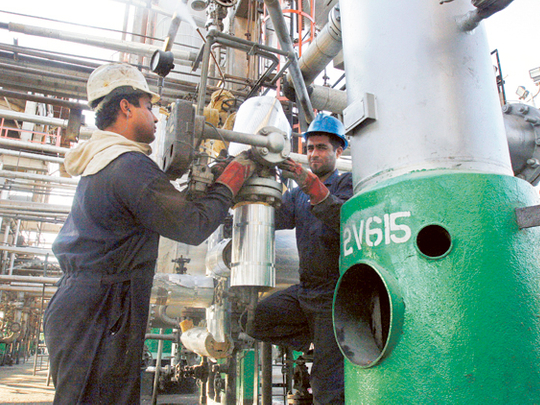
It is said that “on a clear day you can see forever”. But is this applicable to the oil market where the evolution in the long run can be seen?
Forecasters through their complex models and reasonably predictable assumptions can work out scenarios for interested parties to look at ... and make decisions accordingly. After more than two years of relatively low oil prices, Opec’s “World Oil Outlook 2016” (WOO) comes at a time when the oil market is showing signs of recovery, though prices are still about half what they used to be before June 2014.
The assumptions are that the world’s population would increase from 7.3 billion in 2015 to 9.07 billion in 2040. Naturally, most of the growth is in the developing countries, where the hunger for energy and oil is well manifested.
Also, world economic growth would be 3.5 per cent a year and again the developing countries would experience much higher rates than the rest of the world.
Energy policies are assumed to be the currently announced ones but evolving over time, especially with respect to climate agreements, emission reduction and inclination for renewable energy in power generation.
But the most interesting assumption is that on crude prices. The report assumes that prices would increase to $65 (Dh239) a barrel in nominal terms by 2021 or $60 in real terms. But in 2040 the price would increase to $155 a barrel or $92 in real terms.
This is not outrageous in the light of current market conditions if one remembers that oil prices went over $140 a barrel only few years ago. The Opec Secretariat warns that these are “working assumptions” rather than a desired path or what would eventually happen by the changing circumstances in the world.
Given these assumptions, world energy would increase from 273.9 million barrels of oil equivalent (mboe) to 382.1 in 2040, or an overall growth rate of 1.3 per cent a year. Oil and gas would supply 53 per cent in 2040 similar to the current share.
As expected, the natural growth rate would be 2.1 per cent, which is much higher than the 0.6 per cent for each of oil and coal. As expected other renewables (wind, solar and geothermal) would have the highest rate of growth of 6.6 per cent a year. The drive for renewables in power generation can no longer be considered a fancy.
In absolute terms renewables would increase from 3.4-mboe in 2014 to 17.9 in 2040.
The report assures us that “the outlook remains optimistic” as oil demand would increase to 99.2 million barrels a day (mbd) in 2021, which is 1-mbd higher than last year’s forecast reflecting the effect of the low price of crude oil. Oil demand would go on increasing to 109.4-mbd by 2040, slightly lower than last year’s forecast reflecting the inroads of other forms of energy especially renewables and electricity.
In the period under consideration, OECD oil demand would decline by 8.9-mbd due to higher vehicle efficiency and the increase in the number of vehicles using non-conventional fuels such as electricity and natural gas. This is compared to an increase in oil demand among developing countries by 24.6-mbd, reflecting higher economic growth, urbanisation and the desire to have more private cars.
Efficiency improvements would catch up in these countries, but at slower rates than in the industrially advanced nations.
On the sectoral side, growth in oil demand would come mainly from the transport sector and petrochemicals where it would increase by 9- and 3.4-mbd respectively. Only passenger cars would increase from 1 million in 2015 to 2.1 in 2040 and most would still use conventional liquid fuel though non-conventionally fuelled vehicles are increasing to a share of 22 per cent in 2040 from 3 per cent in 2014.
“Non-Opec supply would be fairly flat over long-term, but declines post-2030. Non-Opec liquids output is seen rising to a high of 61.4-mbd in 2027 and then slowly dropping to 58.9-mbd in 2040,” the report estimates.
All regions outside Opec would experience declines by then except in Eurasia, including Russia, where output would approach 17.4-mbd by 2040. US tight oil would resume growth but start declining by 2030 and global non-conventicles would reach 10-mbd in 2029 before declining to below 9-mbd in 2040.
The result of all this for Opec is that the demand for its crude oil would stay “relatively flat from 2019—25, but rises steadily post-2025”, that is to say it would hover “in the range of 33.6—33.8-mbd between 2019 and 2025”.
Growth would resume to a level of 41-mbd in 2040. Opec’s share in world liquid supply in 2040 is 37 per cent, which is 3 per cent higher than in 2015, a result that would surprise many.












